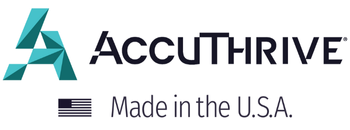
How Artificial Intelligence Could Transform Mohs Surgery
What if you could use artificial intelligence (AI) in Mohs surgery to tell a patient that based on procedures like theirs, there is an X percent certainty that they will not require complex wound reconstruction? What if machine learning could help identify a tumor and its location? Researchers are investigating ways that artificial intelligence could improve Mohs micrograph surgery. These studies could someday help streamline Mohs surgery in a healthcare system facing staffing shortages, an aging population with increasing healthcare needs and rising numbers of malignant skin cancers.
Using AI to Determine Mohs Complexity
Researchers in Israel Tel Aviv University conducted a retrospective study looking at how effectively machine learning could determine wound procedure complexity. The study built upon previous research performed with fewer cases, including Webb and Rivera’s 2012 publication of the WAR score, which was based on a study of 211 cases and used maximum tumor dimension, recurrence, location and aggressiveness to determine Mohs complexity. Another study, Tan et al.’s 2016 research, looked into machine learning to predict surgical complexity of periocular basal cell carcinoma and was based on 156 procedures. The Israeli researchers retroactively applied machine learning to 8,644 Mohs procedures performed in an outpatient setting between July 2010 and August 2021.
The researchers input no histopathological data into the algorithm and determined procedure complexity using two different models — number of stages and wound reconstruction. Researchers evaluated patient demographics, tumor age, location, topography, presurgical size, wound reconstruction technique and number of stages in their analysis, then assigned numerical values and input the values into an algorithm. Complex cases were defined as those requiring more than two stages and all non-primary wound reconstruction procedures. The results were as follows:
- Number of Stages model: The AUC score was 0.79 (good performance), with 77% accuracy, 71% sensitivity, 77% specificity, 14% positive prediction value (PPV) and 98% negative prediction value (NPV).
- Wound Reconstruction model: The AUC score was 0.84 (excellent performance), with 75% accuracy, 72% sensitivity, 76% specificity, 39% PPV and NPV of 93%.
The Israeli researchers say these models do not replace a surgeon’s clinical evaluation but could serve as a second opinion for experienced surgeons and give junior surgeons access to broader knowledge and experience.
Making Mohs Surgery More Efficient
If AI could quickly and accurately identify and map tumors, it could help mitigate staffing shortages in histology by allowing staff to more efficiently prepare for additional tumor removal or reconstruction and implement less wait time for surgeons and patients..
Researchers at Dartmouth College applied a basal cell carcinoma detection and tumor mapping algorithm in a Mohs unit to see how it impacted staff waiting times. They analyzed waiting times for 108 consecutive basal cell carcinoma cases over a 20-day period, then compared the actual workflow to the simulated workflow and compared the time differences. Results showed that the algorithm identified the tumor and its appropriate location in 94% of surgical cases with a 95% confidence interval. The results showed the simulated workflow resulted in:
- 64% less slide waiting time, measured from when the histotechnologist or histology technician places the prepared slides by the microscope to when the surgeon performs the analysis.
- 36% less staff waiting time, measured from when the histotechnologist places the prepared slides by the microscope to when nursing staff begins to prep for either another stage or defect repair.
- 25% less waiting time for the histotechnologist l, measured from when they place the prepared slides by the microscope to when the surgeon delivers tissue from the next stage.
This increased efficiency could help with staffing issues. The American Society for Clinical Pathology 2020 Vacancy Survey of Medical Laboratories in the United States reported a total employment vacancy rate for histology at 8.6%, up from 8.37% in 2018 and from 5.6% in 2016. The report also estimated that 12% of histologists would retire within the next five years.
Could AI Have Broader Applications in Oncologic surgery?
Some of the same Dartmouth researchers also presented a poster session at the 2023 American College of Mohs Surgery Meeting in Seattle to show the results of a retrospective cohort study for integration of artificial intelligence into Mohs surgery for basal cell carcinoma.
Mohs surgery relies on three critical factors— available Mohs surgeons with cancer-specific expertise, a surgeon’s knowledge of tumor mapping, and available histology professional to gross, ink and section tissue. If one or more of those are unavailable, it can present obstacles. The researchers tested if an AI platform could facilitate real-time histologic analysis and tumor mapping.
They constructed an AI framework by building 3D tissue models and specimen measurements with smartphone videos and a turntable. Then the AI analyzed tissue specimens, localized the tumor, identified individual cells, analyzed tissue completeness, then oriented and mapped the tissue into the shape of an MMS map. Results showed:
- The 3D tissue reconstruction generated accurate and complete renderings with precise measurements.
- Tumor localization had an AUC of 0.97 on test slides, nuclei detection and classification localized cells with Dice of 0.86, and tissue completeness had an AUC of 0.84.
- Tissue orientation was 95% accurate (5% error rate attributed to insufficient inking of specimens) and 99.2% tissue mapping accuracy.
- Completing each step and overall margin assessment took an average of 72 seconds per slide and 78 seconds per case.
The researchers say this example of integrating artificial intelligence into Mohs surgery could someday lead to broader applications across oncologic surgery as a whole.
READY TO PLACE AN ORDER?
Let’s Connect
Join our mailing list to receive email updates on new product announcements, clinical articles and trade shows where you can test AccuThrive blades.
